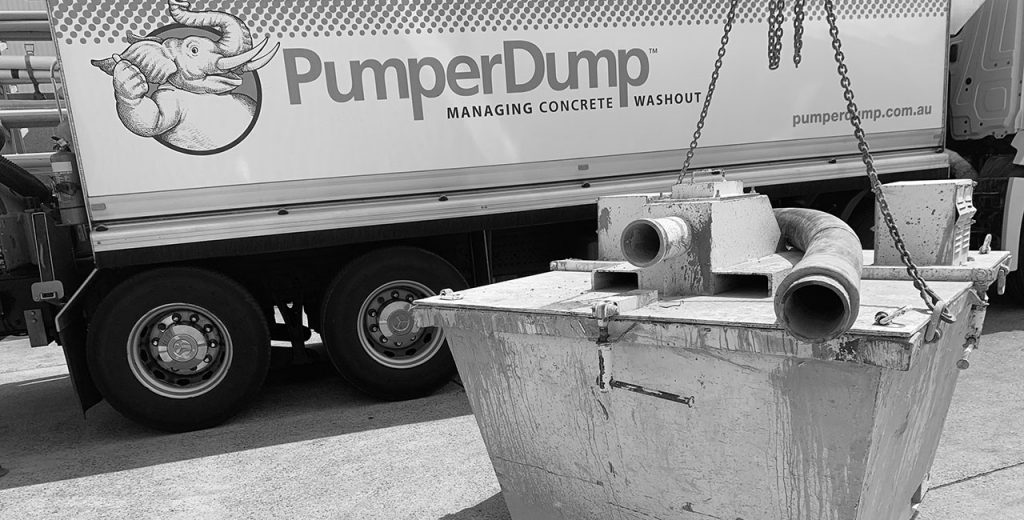Blogs
Obligations of the concrete pumping contractor
NSW Govt - 2020-07-14 08:33

Obligations of the concrete pumping contractor
The concrete pumping contractor has a responsibility to ensure that all staff and/or subcontractors act in ways that do not cause environmental harm through spillage or leakage of concrete.
It is the responsibility of the concrete pumping contractor to ensure concrete residue and/or washdown residue from their activities does not contaminate drains or waterways. Clean-up of all equipment, including the receiving hopper, pipelines and hoses, must also be done in a manner that does not contaminate drains or waterways.
Wash-down water produced during clean-up of equipment must be disposed of in a manner that does not and will not contaminate nearby drains, waterways or soil. It is the responsibility of the concrete pumping contractor to manage the disposal of excess concrete and wash-down water generated during the pumping and clean-up operation. Disposal to the sewer system is not permitted without prior consultation with the local sewage authority.
Purpose
Proper management during the pumping of concrete can minimise the risk of any detrimental impact on the environment.
Applications
• for concrete pumping contractors working on construction sites
• for site managers overseeing concrete-pumping activities
Best management practices
- Where possible, concrete pumping equipment should be set up on the construction site. This reduces the potential of leakages from hoppers, hoses and fittings that could contaminate the stormwater system.
- Ensure adequate protective screens are erected around the pump area to prevent concrete splashing into street gutters or stormwater drains.
- Where possible, ensure the pumping of concrete occurs at a location on the site where any spillage will not contaminate the stormwater system.
- Where a concrete pump is located on a roadway or footpath where excess material could enter the stormwater system, appropriate bunding to trap spilled material should be installed. Portable concrete collection units (plastic or metal trays or receptacles) should be placed under pumping equipment to collect any spilled material during works (see figure 2).
- Hoses, hoppers, wheelbarrows and other equipment must be washed in the site wash-down area after all excess material has been removed by hand.
- Excess and residue concrete from the hopper and line should either be collected and sent back with the delivery truck or placed in the site’s designated concrete
- masonry recycling receptacle.
- To minimise the amount of wash-down water generated, scrape excess concrete residue from the hopper before washing. Do not wash out the hopper directly into the street gutter.
- It is the responsibility of the concrete contractor to properly manage the disposal of wash-down water generated during the cleaning process. Options for collection, treatment and disposal of wash- down water should be discussed with the site manager.
- Wash-down water from the hopper must not contaminate the stormwater system. The wash-down area should be used only for small volumes of wash-down water and is not to be used as a disposal point.
- Mud, soil and stones carried off-site are regarded as pollutants. Therefore, tyres and undercarriages must be clean before vehicles leave the construction site.
Inspection and maintenance
- Inspect and maintain the machinery regularly to minimise leaks and drips.
- Pollution controls should be in place before concrete is pumped. The concrete pump contractor should inspect pollution controls to ensure they are adequate, and should liaise with the site manager if there are any problems. •The site or project manager or delegate must maintain vigilance during the work activities to ensure that pollution control procedures are being followed.
- Placing equipment or material where it is likely to pollute the environment may result in on-the-spot fines or prosecution.
Ref: Extracted from the NSW Government’s Environmental Best Management Practice Guideline for Concreting Contractors
Testimonial From Chatswood, NSW
I am foreman on a big and a busy project that works to tight deadlines. It is my responsibility to ensure that everything on the site runs smoothly and that means careful planning. This is a high density locale and we were pouring from the street during clearway-limited times: we simply could not afford to cope with clumsy washouts, and we certainly didn’t want to face the heavy penalties or the bad publicity from slurry run-off.
It was a total no-brainer for me that I should call in PumperDump. PumperDump provided all of the washout bins from start of pours to the end. We have never had any problems with PumperDump fitting into our tight schedules. Quite simply, PumperDump has provides more efficient trouble-free concrete washouts than anyone could imagine.
Site Foreman
From Chatswood, NSW
Testimonial From Sydney
Today’s site managers have less and less resources allocated. I used to have several assistants, but now, it’s just me and one labourer so I simply can’t use him for tidying up concrete mess.
I worked out that, by the time I organise a jack hammer, labourer, machinery and then move the waste to the skip, dumping concrete on site was costing me a whole lot more that what I pay for the PumperDump service.
Some project managers seem to need to be convinced about PumperDump but as soon as I show them how just two phone calls to PumperDump gets rid of all of the hassles of washouts, they’re sold.
Site Manager
From Sydney
Who We Have Worked With

Theiss
Ark & Royal
North Shore Hospital
Grocon
Five Star Green Star
1 Bligh St.
Energised Alliance
Waverly Substation,
Bondi
Baulderstone
Sydney
Harbour Bridge
John Holland Group
Sydney Opera House

Theiss
Wynyard Walkway

Bouygues John Holland
North Strathfield
Railway Upgrade
Sydney Trains
Various sites
